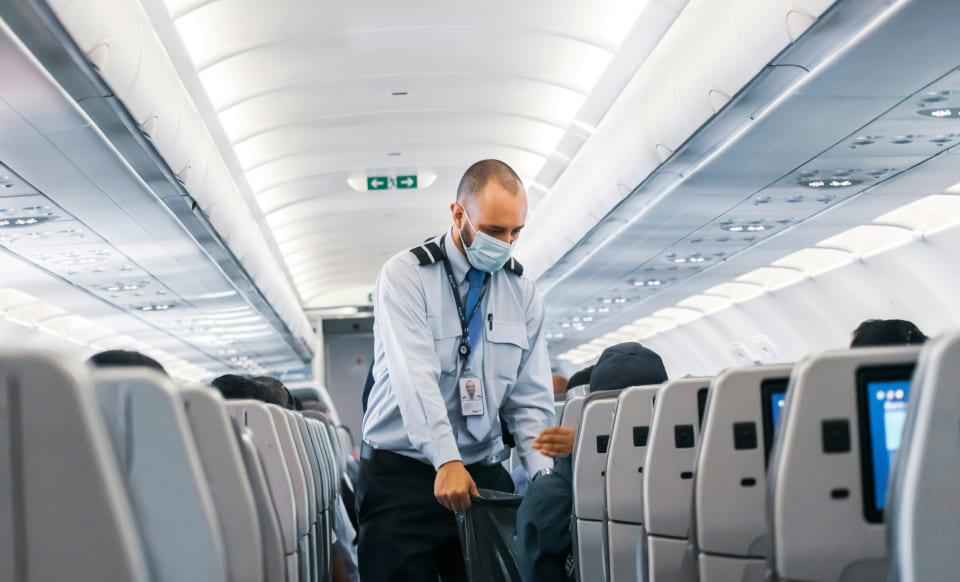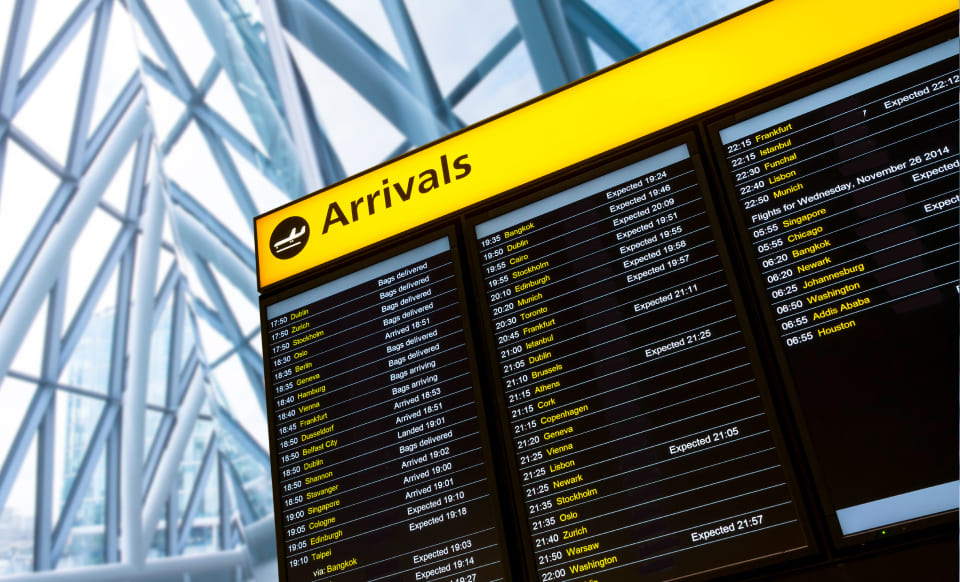
35 tips & tricks
for a stress-free flight from regular flyers,
airline stewards and pilots
Read more
Whether you love to soar above the clouds or are a nervous flyer, arriving at the airport is often the moment where you’ll feel like your holiday begins. Flying can be the key to exploring new countries, unlocking amazing travel opportunities that simply wouldn’t be possible in the timeframe if you journeyed by train, car or boat.
But with billions of passengers passing through the world’s airports every year, going away can be stressful. The volume of people, safety rules and regulations and precise timings can cause worry and reduce that holiday feeling you get. Plus, some people are understandably nervous about taking to the skies.
In this guide, we’ve brought together 35 tips and tricks to smooth out your flying experience, from the people who have clocked up plenty of air miles. We’ll look at what you can do before you even leave home, actions you can take at the airport, and even how you can improve your experience in-flight, so all that’s left to do is sit back and relax.

Planning your trip
Proper planning can help reduce stress further down the line. Not only will you be confident that you’ve done everything you can to ensure an easy flying experience, but by starting early, you have the chance to pack any items that might make you more comfortable. After all, there are a lot of shops in airports, but they won’t stock everything you need. Let’s look at some of the actions you can take before you leave home.
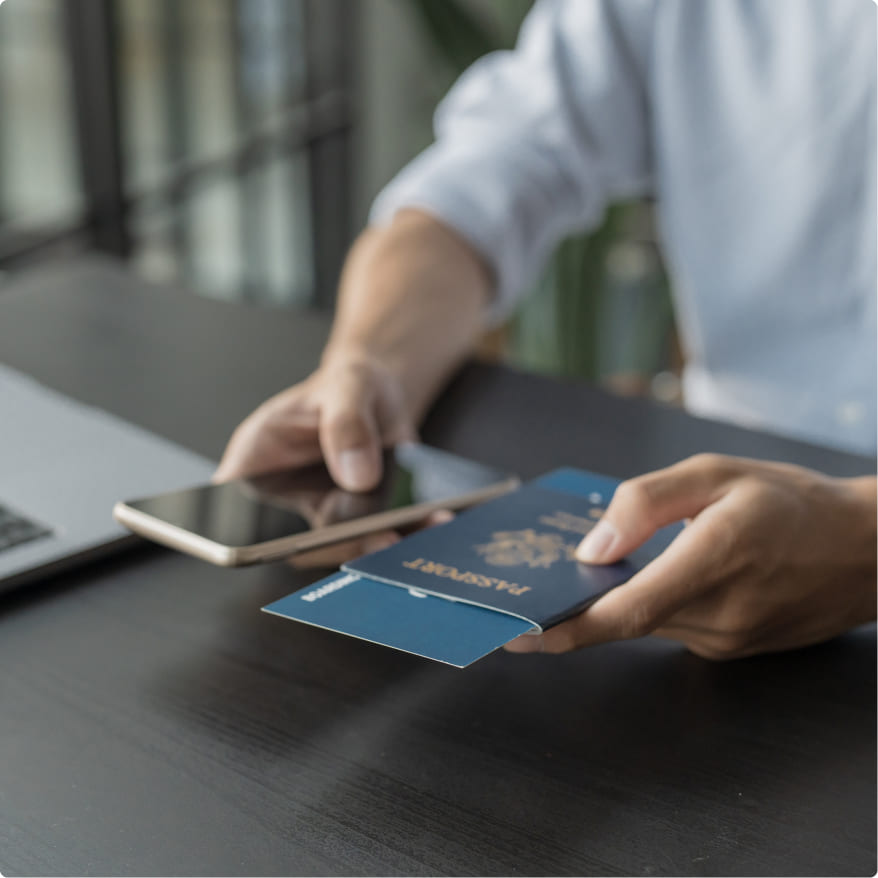
Choose your seat carefully
Your flying journey starts when you book your ticket. Whether you like to book a year in advance or are a spontaneous holidaymaker, knowing the time and date of your departure is the kickstarter for the rest of your trip. But does the seat you’re assigned on the plane really matter, or is it just a case of being on the right flight?
General consensus on online forums* is that your seat choice comes down to personal preference. Window seats offer the best views, and the reassurance that you won’t have anyone asking you to get up when they need to use the bathroom. You can also lean your head against the wall of the plane – ideal if you’re likely to sleep, or if you don’t want to run the risk of accidentally dozing off on the shoulder of the person next to you. Plus, they can feel a little more private, as you can lean slightly away from the centre seat, rather than being arm-to-arm the entire time. If you want a premium view, make sure you sit in the row behind or a row in front of the wing, as these tend to have the best visibility.
*Reddit forum accessed Friday 11th October 2024.
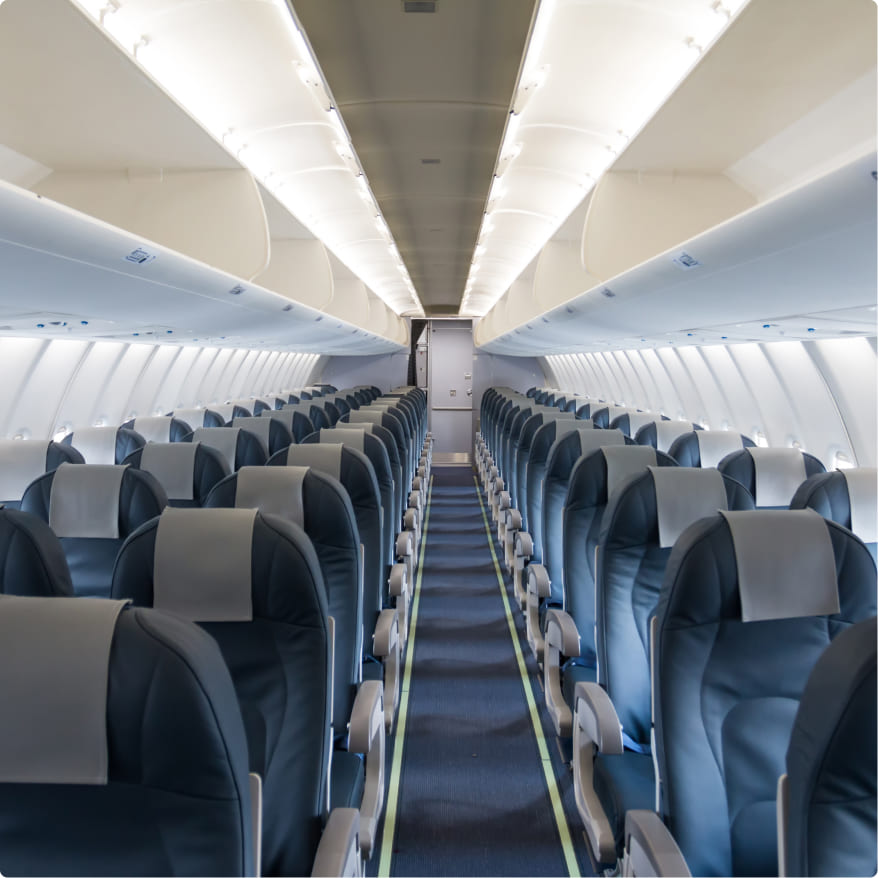
In comparison, an aisle seat can be a great choice if you’re someone who gets up regularly, as you won’t have to disturb anyone. This is particularly helpful on long-haul flights, when your fellow passengers might be sleeping. However, bear in mind that you will have to get up if someone else needs to get out, which can impact your own ability to have a nap. Taller travellers will also appreciate the leg room an aisle seat offers.
When it comes to choosing the row, many rows are the same – with the exception of first, last and emergency exit rows. The front row removes your chance to store items under the seat in front of you, while the back row will likely reduce your ability to recline your seat, and will be near the bathroom. However, both of these options may allow you to get off the plane faster, assuming the flight attendants are able to open both exits on landing.
The emergency exit rows come with far more leg room, but also more responsibility. You’ll need to agree to assist the cabin crew if needed in the unlikely event of an emergency landing, so it’s up to you if you feel comfortable with that – you should be asked before takeoff.
You can use online tools to research the layout of the plane you’ll be flying on, if you want to get a better idea of what your chosen seat will give you before you board.

Get more room if you’re travelling as a pair
Travelling as a couple, or with a friend? You might be able to game the system on quieter flights and get allocated a whole row to yourselves. Try booking the window and aisle seats, leaving the middle one free. Unless there’s a solo traveller, or the plane is busy, the chances are that you’ll get to keep the middle seat too. Even if someone does end up allocated to sit there, you can simply offer to swap so that you and your travel companion can sit next to each other. Just bear in mind that they can choose to stay in the seat they’ve booked – so if you want to guarantee you’ll be next to each other, then book adjacent seats.
It’s worth noting that this only works on certain airlines, where you can choose your seat when you book. On more budget airlines, or smaller ones, the policy might not guarantee that all members of your group will be seated together, in which case someone will likely get allocated the middle seat.
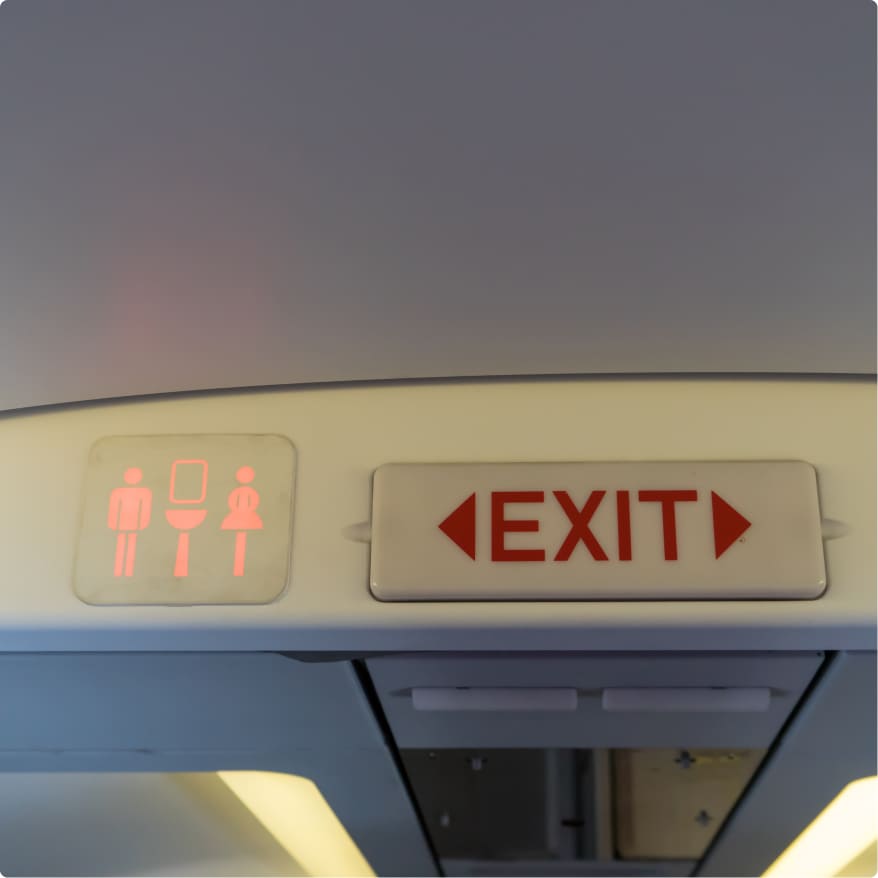
Sit at the front if you want to be off the plane quickly
If you’ve got a connecting flight you need to catch, or have other time-sensitive onward travel plans, you may want to be off the plane as quickly as possible. While there’s nothing you can do to make your luggage arrive on the belt faster, if you only have hand luggage or your cases will be transferred to another flight, avoiding the rush of the middle of the plane can give you the time you need.
Choose a seat in the front of the plane when you book, or enquire when you check in if the seats are randomly allocated. The desk attendant may be able to help move you to a seat closer to the front, or tell you if the back doors will be open as well, in which case a row further back might also be suitable.
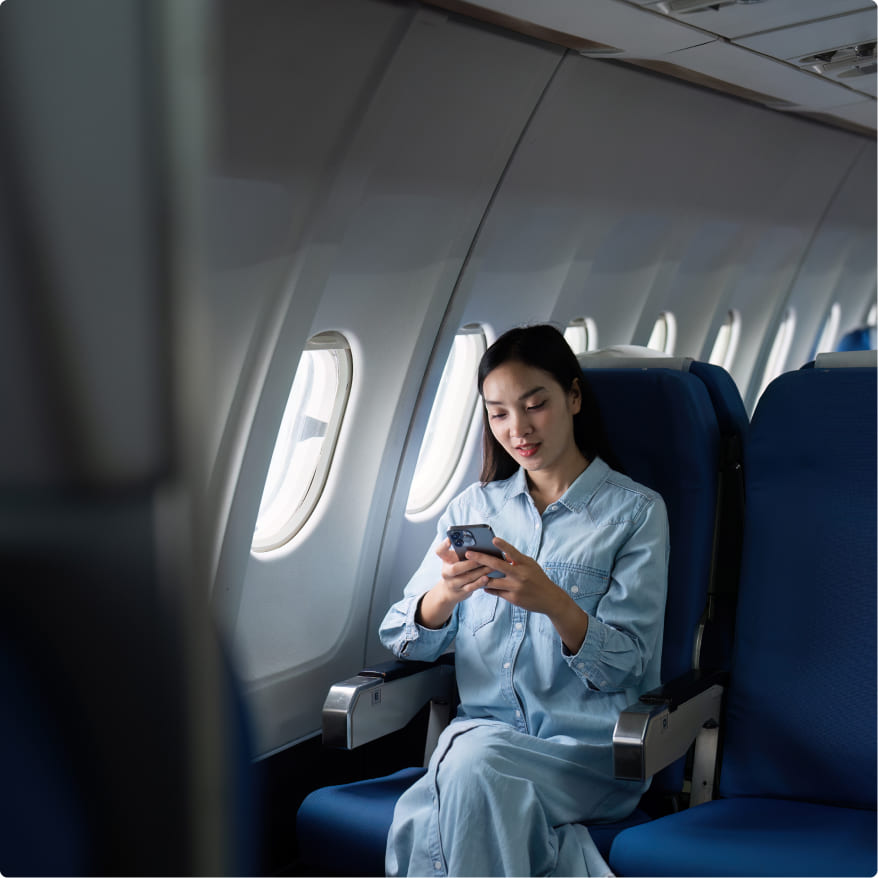
Fly off peak for a quieter experience
If you hate the bustle of a busy airport, or want to avoid annoyances like having your hand luggage moved to the hold because of a full flight, try to book your flight during off peak times. Very early morning or late night flights are often less popular, as people want to avoid having to stay at the airport the night before and incur extra cost.
In the same way, late night flights can make transport connections difficult, and so they’re also less popular. However, if you’re picking up a hire car or getting a taxi to your accommodation, arriving after dark is unlikely to bother you.
Equally, flying midweek on a Tuesday or a Wednesday can also mean you have a quieter experience and pay less, too. This is because you’ll avoid people who are coming back from or going on weekend breaks, as well as regular business flyers or holidaymakers who start their week away on a Monday. Just make sure you’re aware of school term dates, if you don’t have children, as school holidays see increased demand regardless of usual off-peak timings.
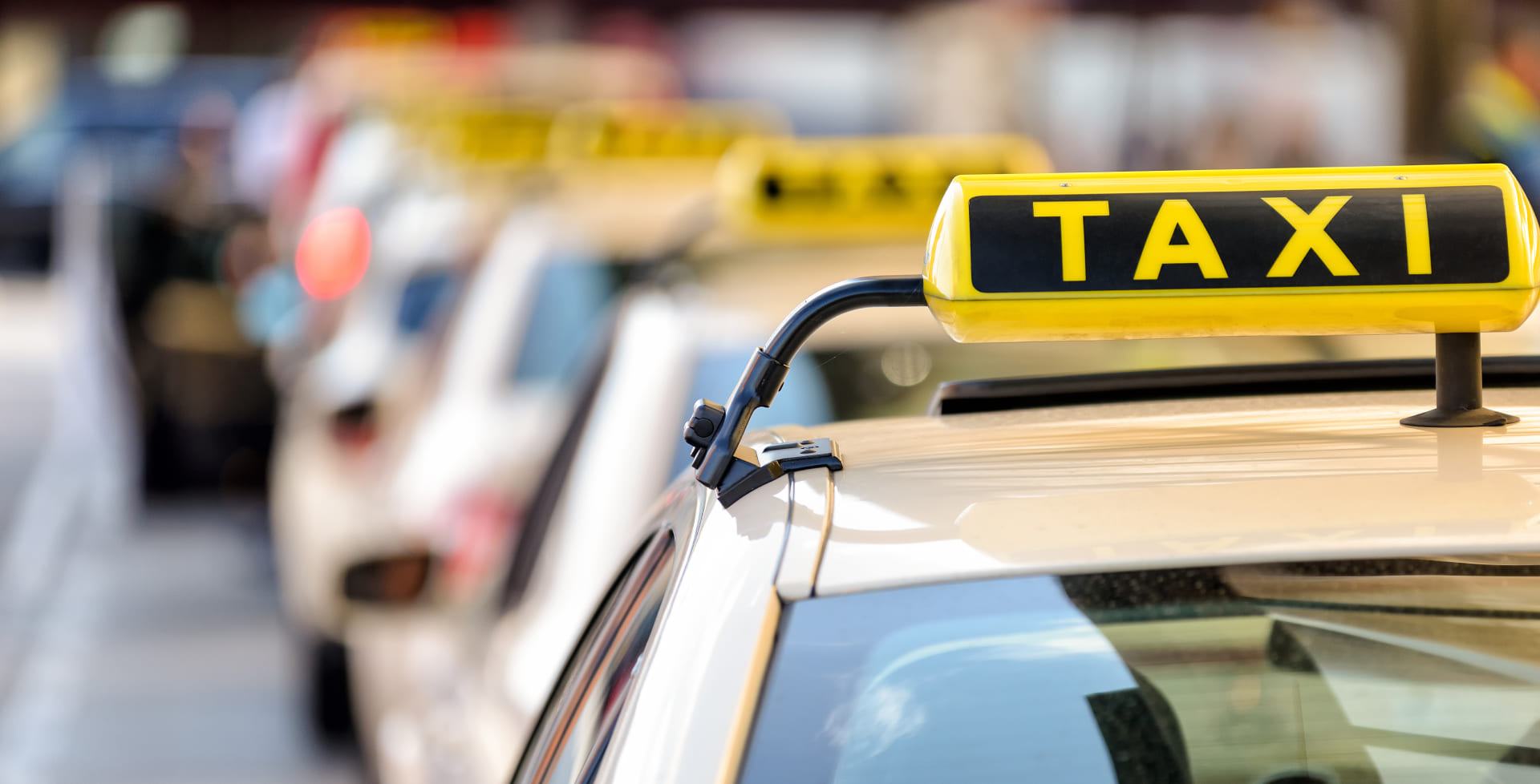
Have your airport transfer sorted before you fly
When you step off your flight, the last thing you want is to struggle to get a taxi, or have to try and work out the best train or bus ticket to get you to your final destination. Before you arrive at the airport, make sure you’ve either booked a taxi, or know where the public transport links are and which ticket to buy.
While it’s tempting to take a more relaxed approach if you’re not on a tight schedule, having at least an idea of where you’re going after you land is advisable. When you’re tired from a flight and in a new country, it can be overwhelming to suddenly have to make decisions, especially if you can’t read the local language.
If you’re getting a pre-booked car, you can often send them your flight number ahead of time so that they can track it and adjust accordingly for any delays.
If you’re relying on public transport, you may be able to get a digital ticket that isn’t time restricted. If that’s not possible, it’s best to avoid booking a specific train or bus time in case of delays, but you can research the best ticket type ahead of time so you know what to buy when you arrive.
In some cases, cities offer tourist transport tickets that last for several days, which are cheaper than buying singles. If you’re likely to use buses and trains regularly during your stay, this could be the best option.
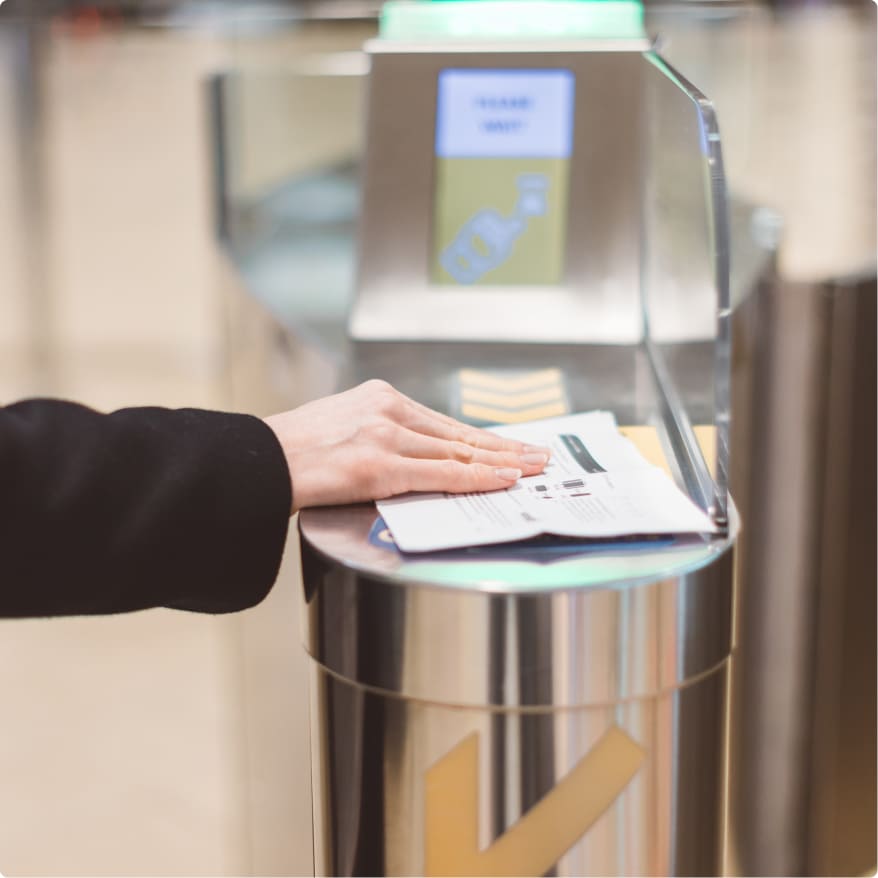
Have your boarding pass downloaded and printed
Digital boarding passes are increasingly popular, as home printers become a thing of the past. Having it on your phone also has the added benefit of reducing the risk of you losing this all-important piece of paperwork. However, many travel operator apps require the internet to load, or send boarding passes via email, which can cause issues if you’re in an area of poor signal or have limited data abroad.
To reduce the risk of any issues when it comes to boarding, download your boarding pass onto your device if possible. Even if you do download a digital copy, it can still be worth the extra effort of printing it out – regardless of whether you use it, you’ll be glad to have it if your device doesn’t work. Additionally, some budget airlines will charge you to print out boarding passes in the airport, so check the small print before you leave the house.
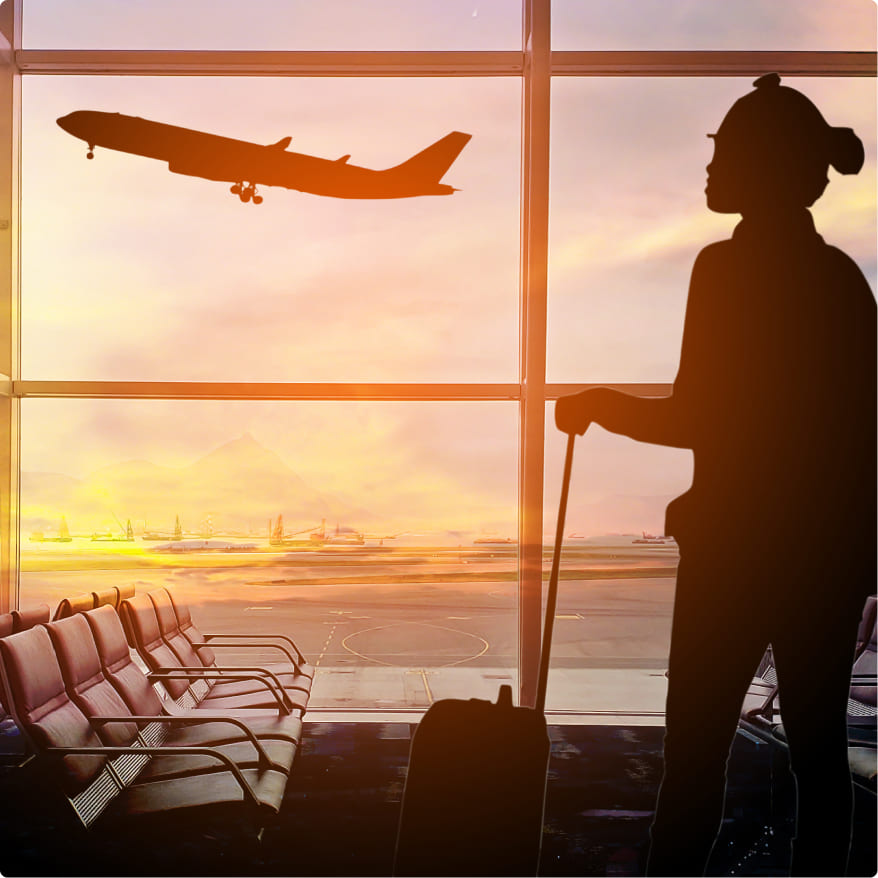
Reduce the risk of flight delays
Delayed flights are something that will affect many travellers at one point or another, with some research showing that 71% of people had experienced flight delays. Considering the disruption a delayed flight can cause to your travel plans, it’s understandable that you’d seek to avoid this wherever possible.
Experts suggest that the risk of a flight delay or cancellation is lower in the morning, with percentage risk dropping by around 30%. This is for several reasons:
- There’s no need to wait for an inbound plane before your flight can leave
- Fewer people travel at this time so it’s easier to rebook you onto another flight
- Major weather delays such as thunderstorms are more likely to occur in the afternoon
- Cabin crews and pilots are only just starting their days, meaning there won’t be issues with scheduling clashes
- You remove the snowball effect of other cancellations impacting your flight
Prepare a flight bag with comfort essentials
When you’re packing for your trip, it pays to have certain items separated out, especially if you’re planning to travel hand luggage only or with a wheelie case as well as a checked bag. Separating out the items you’ll need to hand on the plane – entertainment, snacks, headphones etc. – means that once you board, you can simply put your larger bag in the overhead compartment and forget about it.
Top items to pack include:
- Water bottle (take an empty one and fill it with water after security)
- Sweets or gum (to help with adjusting to ear pressure during takeoff and landing)
- Noise-cancelling headphones
- Entertainment device such as tablet, e-reader or book
- Snacks
Plus a few extra comfort items for long-haul travel:
- Moisturiser
- Face wipes
- Sleep mask
- Pillow
- Blanket (or shawl that can act as one)
- Portable charger
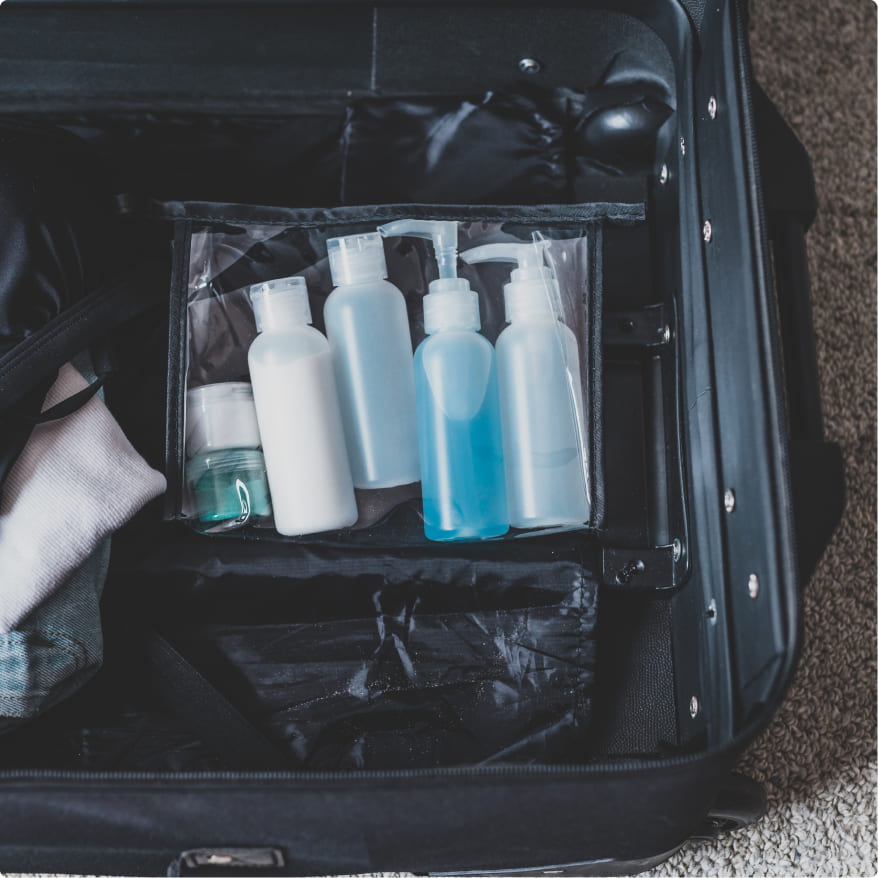
Prepare your liquids before security
Most airports have some kind of restriction on how much liquid you can carry in your hand luggage, which is the same regardless of the size of your bag. While there has been some movement to increase the amount of liquids allowed, or remove the rule of having to separate them out of your bag, this isn’t enforced yet.
Many people think that they have to use the plastic bags given to them at the airport, but this isn’t true. You can pack your liquids at home, in a bag that matches the requirements, often saving you from having to stop before security and get everything out. In UK airports, this needs to be a resealable plastic bag, maximum 20cm by 20cm in size. Liquids need to be in containers of 100ml or less.
If you’re worried about the number of liquids or creams you’ll have, then consider alternative formats. For example, solid toiletries, such as shampoo and conditioner bars, are better for the environment and don’t count towards your liquid allowance – a great benefit if you’re travelling with just a cabin case.

Start adjusting for jet lag ahead of time
Jet lag isn’t an issue for short-haul flights, but if you’re skipping more than three time zones, you may start to struggle. This is because your body relies on external signals such as light, meals and exercise to maintain your circadian rhythm, all of which are impacted when you sit on a plane for an extended period of time.
There’s no miracle method to avoid jet lag, but there are some suggestions that shifting your body clock in the days leading up to your flight can help you be more adjusted when you arrive. By moving your sleep schedule, strategically managing your light exposure and by taking melatonin supplements, it’s possible to move your circadian rhythm towards the time zone at your destination.
However, it’s not easy, as your body wants to react to the cues that are currently around it. What you can do is start to adjust on the flight, by changing your watch to the time of your destination and napping accordingly where possible.
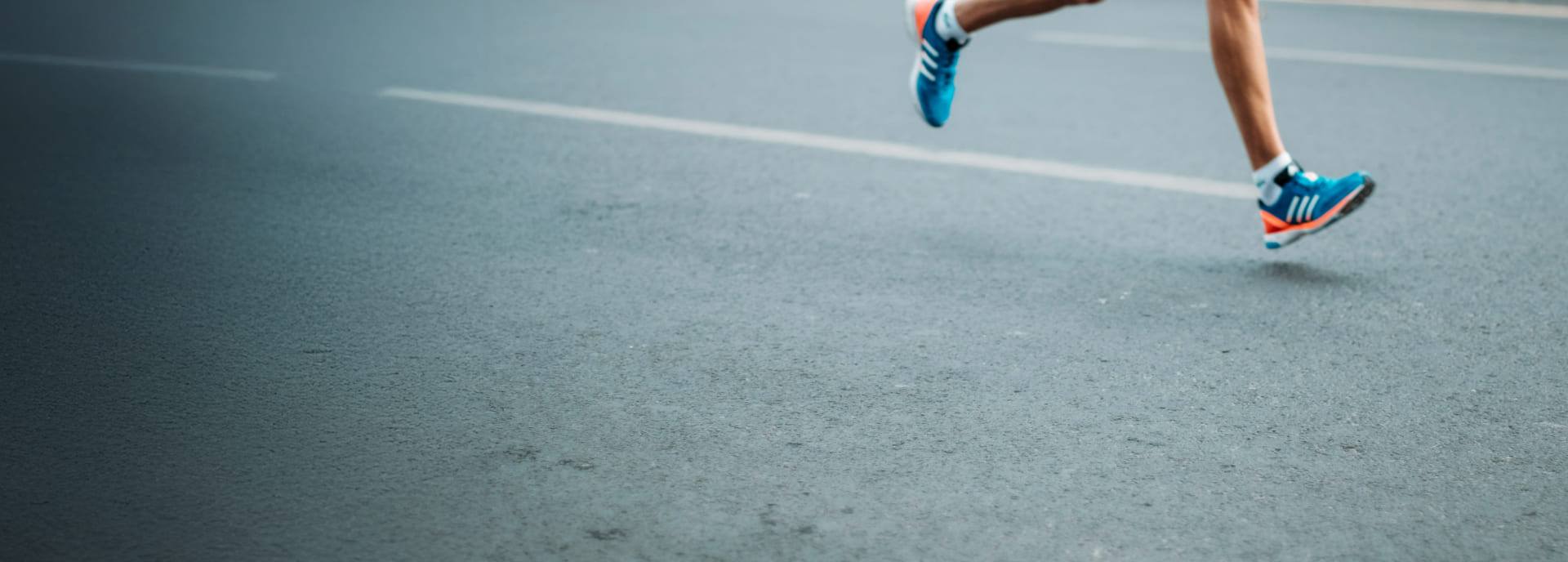
Exercise the day before to prep for long haul
Regardless of whether you’re travelling in first class or economy, there’s no denying that space is minimal on a plane. Therefore, it’s good to plan some exercise in the days leading up to your flight, so that you can reduce the feeling of restlessness and help your body relax into this sedentary period.
Additionally, exercise can help regulate mood and reduce stress, so if you’re a nervous flyer, taking part in some low-impact exercise such as yoga or swimming in the lead up to your trip may help you feel calmer.
However, it’s important not to overdo it, as a hard workout close to takeoff can leave you feeling uncomfortable and also impacts the body’s recovery.
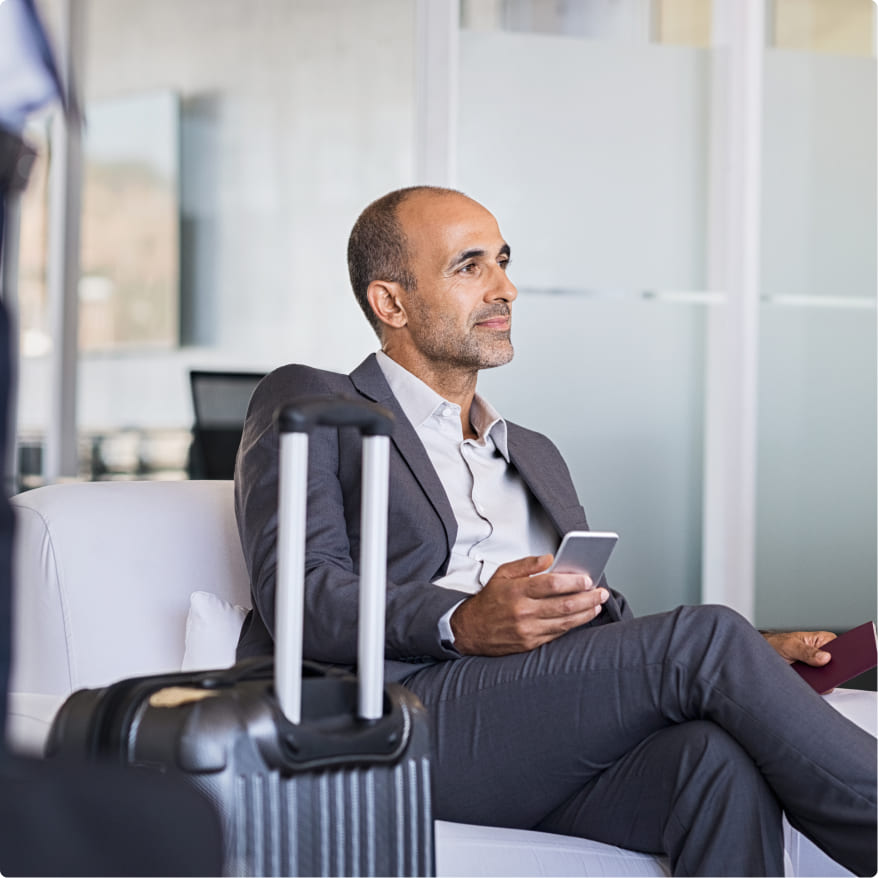
Get onto an airline rewards programme – or book lounge access
If you’re a regular flyer, signing up for an airline rewards programme is a great way to put yourself in line for an upgrade. Many of these schemes are free to join, but as you collect points, you’re proving to the airline that you’re loyal to them, and therefore may get preferential treatment where there’s opportunity.
If you’re taking several long-haul trips, it can also be worth looking at paying to join a certain tier of airline membership. While this does incur an extra cost, the benefits you get may be worth more than the amount you pay if you use it enough. Alternatively, you can look at booking a lounge day pass – again, an extra cost, but one that comes with comfier seating, WiFi, less noise and sometimes complimentary food and drink.
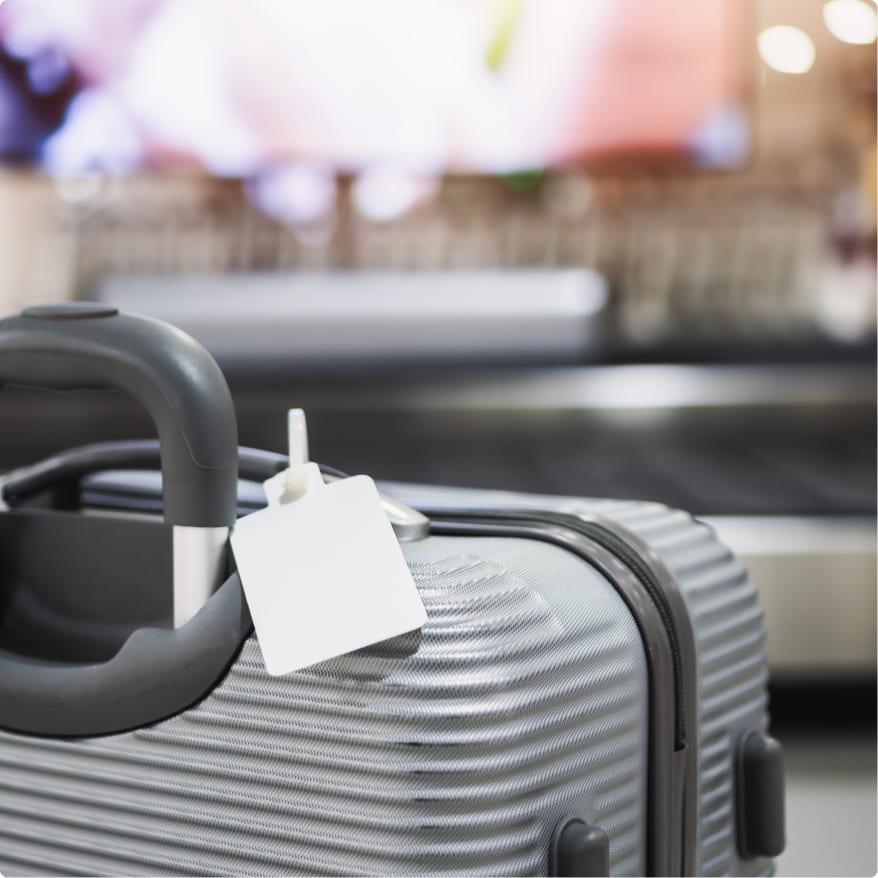
Reduce your chances of lost luggage
Unfortunately, luggage going missing is a fairly common problem. Statistics suggest that around 26 million pieces are lost every year, which equates to around eight bags in every 1,000. The good news, though, is the Association of European Airlines reports that 85% of lost luggage is retrieved within 36 hours – so you won’t be without it for long. Despite this, it’s inconvenient, so it’s best to reduce the risk as much as you can.
You can increase your chances of your luggage making its way back to you by labelling or tagging it. Include your name and phone number or email address, as you’ll be able to respond to those while you’re travelling, but don’t put too much personal information on there for security reasons. If you’re using a tag that is on the outside of your bag, double your chances and put a tag inside the bag too – this will help if the external one is ripped off in the luggage transfer process.
If you’re a frequent flyer, you may want to consider investing in some kind of smart tracking tag that syncs to your phone. Place this inside your luggage, connect to the app, and know where your luggage is at all times.

At the airport
Once all the preparations are complete, it’s time to set off on your trip. Driving to the airport or sitting on the train with your suitcase while everyone else is heading to work may give you a thrill of excitement, but it’s understandable if you can’t quite relax until you’re all checked in and where you need to be.
However, once you’re airside, your holiday truly begins. Once you’re through security, all that’s left to do is wait, so you can treat yourself to a magazine, some food or potentially even a drink before you board the plane. It’s also a chance to get yourself sorted, free from bulky checked suitcases, ensuring you have everything you need before you reach your aeroplane seat. We’ve got some top tips for making the most of your time at the airport.
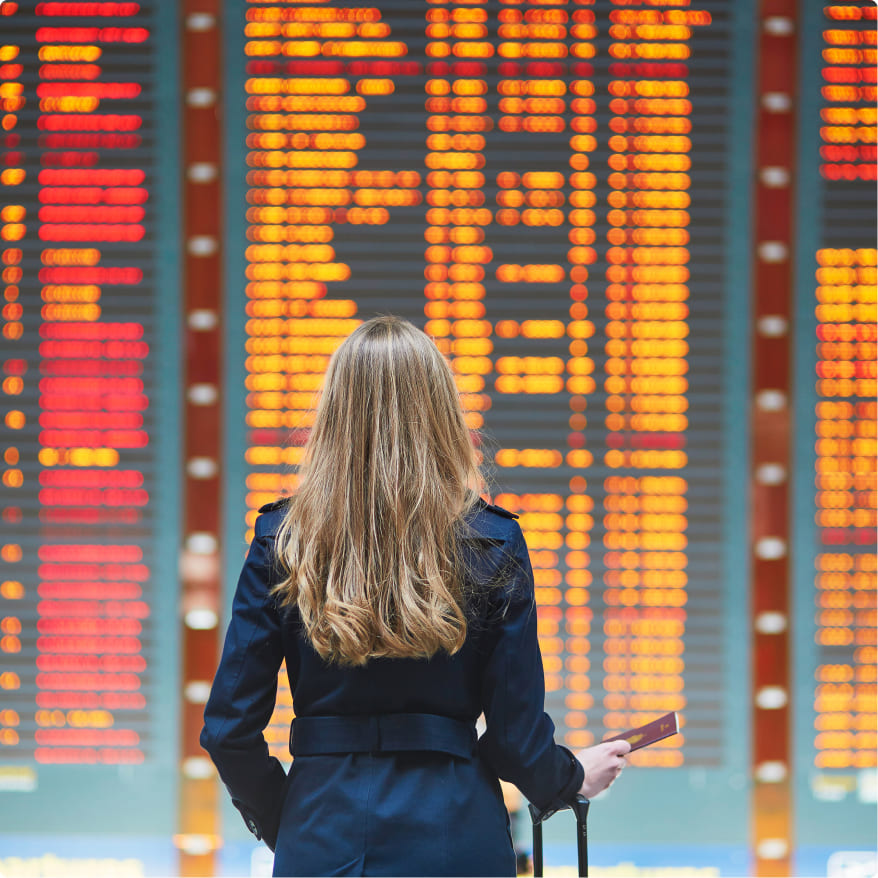
Arrive in plenty of time
Generally speaking, airlines recommend that you arrive three hours before your flight if you’re checking in luggage, and two if you’re just flying with hand luggage or it’s a domestic flight. It rarely takes this long for you to get through security and to the gate, so it can be tempting to cut it fine and save yourself waiting time – but you’ll be glad you got there early if an issue arises.
Long queues at security, extra searches or even just a gate that is far away can all impact the time you need before your flight, and running through the airport is never fun. If you’ve checked in, a tannoy announcement will be made if you don’t board the plane on time – but ultimately, it’s not going to wait for you to take off. Some extended travel policies do cover missed flights, but this is often an add-on, so if you don’t see it on your policy documents then you won’t get a refund, regardless of whether or not you feel missing the flight was your fault.
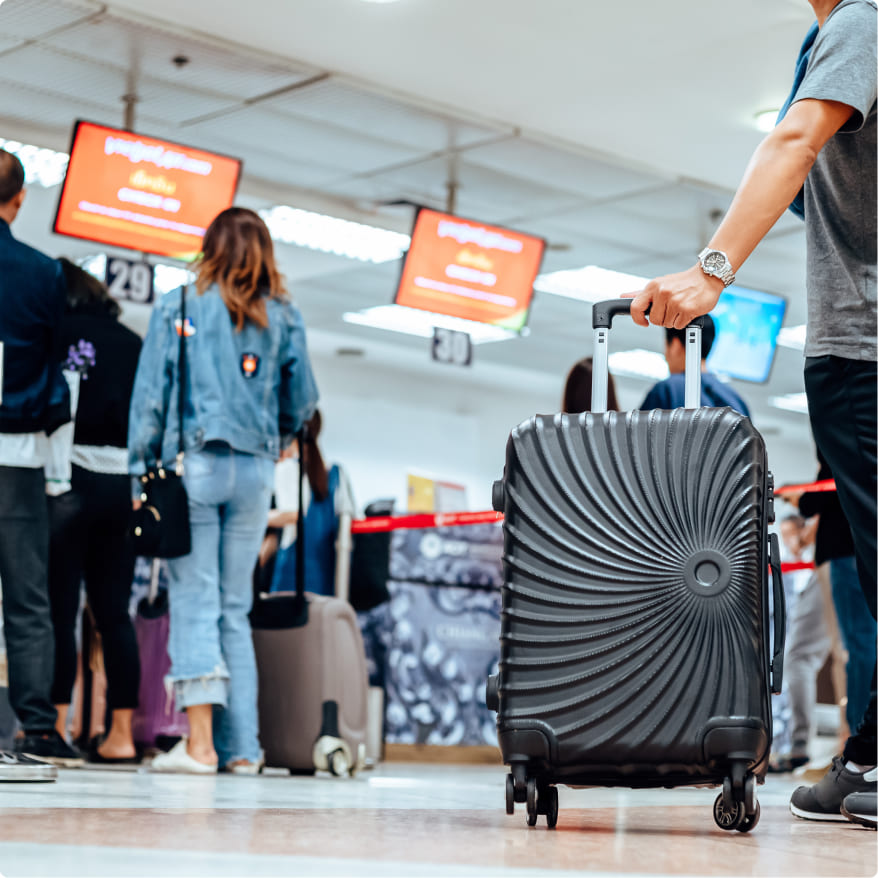
Checking in
If you’re travelling with checked baggage, you’ll likely have to go to a check-in desk, regardless of whether you check in on the airline’s app. This is so they can weigh your cases, tag them and whisk them off to the luggage carts.
To avoid further delays, weigh your bags before you leave the house and avoid cutting it fine. Your scales might be slightly different to the airline’s, and it’s frustrating and expensive to pay for overweight baggage. If you’re struggling, wear bulky clothes rather than packing them, and put some heavier items in your hand luggage if it’s relatively empty.
Most airlines allow 10kg for cabin cases, so you’ve got a little extra – just don’t break the liquid rules.
If you’re only taking hand luggage, don’t get caught up in long queues. Check if you can check in online, print your own boarding pass and then sail through the baggage hall and head straight for security. Some airlines will allow you to check in several days before your flight, so you don’t even have to worry about it on the day.
Layer up
When you first get on the plane, you might feel chilly. Especially if the aircraft has been turned around quickly, the air conditioning might be blasting, leaving things feeling a little colder than comfortable. However, as the flight goes on, you might get hot from being in a smaller space without fresh air – or you might remain cold because you’re not moving around. All of this means that layers are key to comfort, allowing you to adjust as you prefer.
Make sure you’ve got the layers you need out of your case before you check in, to avoid rummaging through everything at the desk. Soft items such as hoodies can also double up as pillows or blankets, so even if you are warm, they won’t go to waste.

Leave time for last minute purchases
Airport shopping areas are designed for impulse purchases, but they’re also designed to be stocked with items that travellers have forgotten. Stocking everything from clothes to toothbrushes, they’re a great place to get everything you need before you fly. Leave a little bit of time in your schedule for last minute shopping; if you don’t forget anything, you can simply window shop or spend the time getting into your holiday read. You don’t want to be rushing around trying to find sun cream while your gate is being called.

Stock up on food and water
As we’ve discussed, unfortunately sometimes your flight might be delayed. The best way to prepare for this is to stock up on sweets, snacks and water once you’re airside, so even if you have to sit on the tarmac while the plane waits for a takeoff slot, you’ll have everything you need.
If you’re transferring flights, having this food can also be very helpful. You might not have time to grab anything at the connecting airport, and by buying food before you leave, you can ensure you’ve got something you like. In the case of people with intolerances or allergies, it also saves you having to translate packaging in different languages or go without food if you can’t get any answers on ingredients.

Prepare your entertainment
Some airlines offer WiFi, but many don’t, and it can be unreliable. Plus, it can be nice to switch off from the outside world for a while. So, if you haven’t done this already, use the time in the airport to download the e-books, films, TV shows and podcasts that you want for your flight. If there’s a free plug available, you might also then want to charge up your devices.
Alternatively, pack a small power bank that will charge your phone or tablet in the air, so that you’ve always got something to do. Remember, most airports will require you to put any powerbanks in your hand luggage, so even if you’re only intending on using it when you arrive, keep it in your cabin bag anyway.
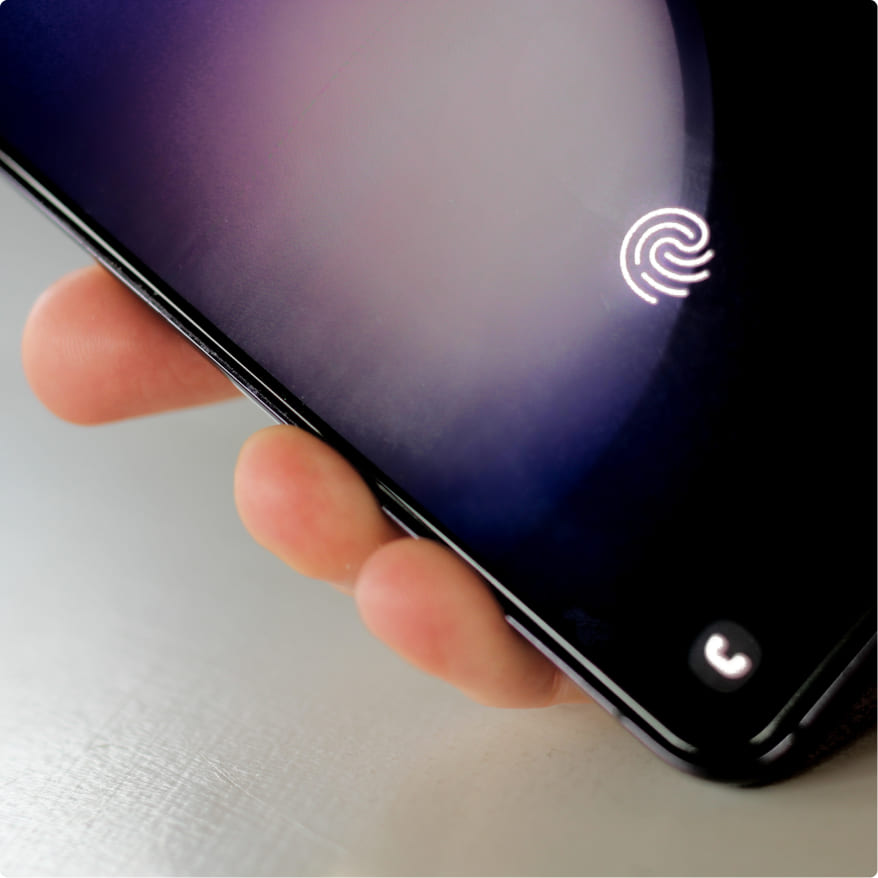
Take photos of your important documents
Accidents happen, and it’s not unheard of for passengers to leave their passports or other important documents in the seat pocket on the plane. Take photos of anything vital on your phone, as well as snapping a few pictures of your luggage. That way, if something happens and you do lose your ID cards or bags, you’ve got a way to confirm that they’re yours when you’re reunited.
Just make sure you’ve got good security on your phone, such as using biometrics to unlock it, or storing them in a password-protected folder.
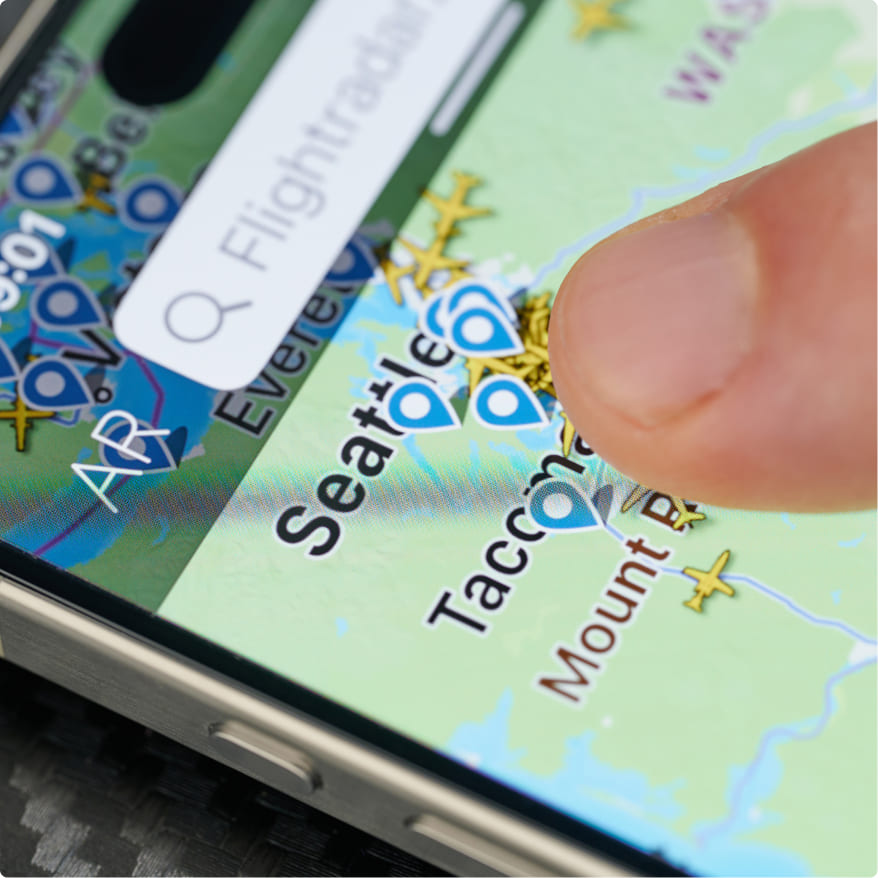
Track the flight on your phone
Airline apps are very useful for keeping you informed while you wait for your flight. They’ll tell you if the plane is delayed, which gate you’ll need and when you can start boarding. Having this app downloaded ahead of time can mean you don’t have to hang around at the departure boards in the airport, so it’s well worth doing.
If you’re an Apple user, there’s also a hidden functionality in your phone that will allow you to track your flight. Send yourself (or someone else) an iMessage with the flight number, highlight it, click on preview flight and you’ll get all the information you need, without an airline specific app.

Boarding the plane
Once you’ve navigated airport security and stocked up on your duty free shopping, it’s time to head to the gate ready to board. For anxious travellers, this part of the process can be particularly stressful, so it’s important to know the tools and techniques that’ll help you prepare for a smoother departure.
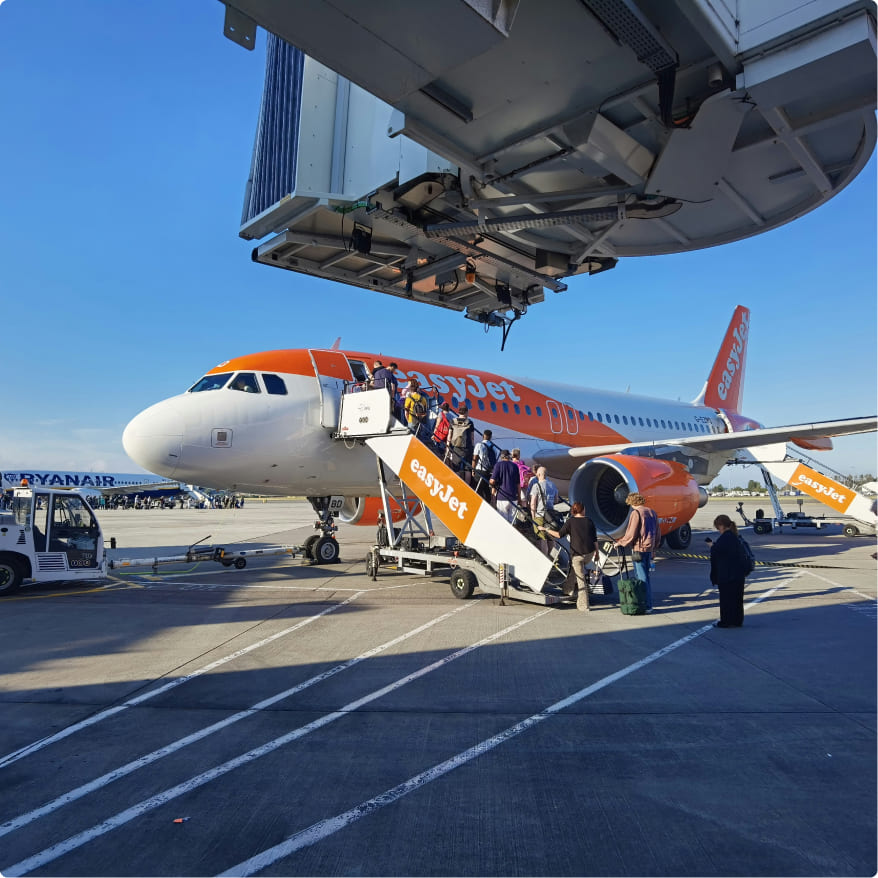
Do your gate prep in advance
Often, there is only a relatively small window between the gate being announced and the final call for boarding, which is why it’s so important to give yourself as much time as possible to feel in control. This starts with knowing the gate number as soon as it’s available – this will generally be around 45 minutes before your departure time.
Lots of airlines now offer push notifications on their mobile apps, providing travellers with instant updates and information about their flight, including the gate number. Sometimes, you might find your gate number listed on your boarding pass; at the very least, you should be given a time when the gate is expected to close.
It can be helpful to familiarise yourself with the layout of the gates, especially at larger airports where you might have to take a shuttle to get there. This will mean you know where to start heading once the number is announced and you can arrive at the gate with plenty of time to spare.
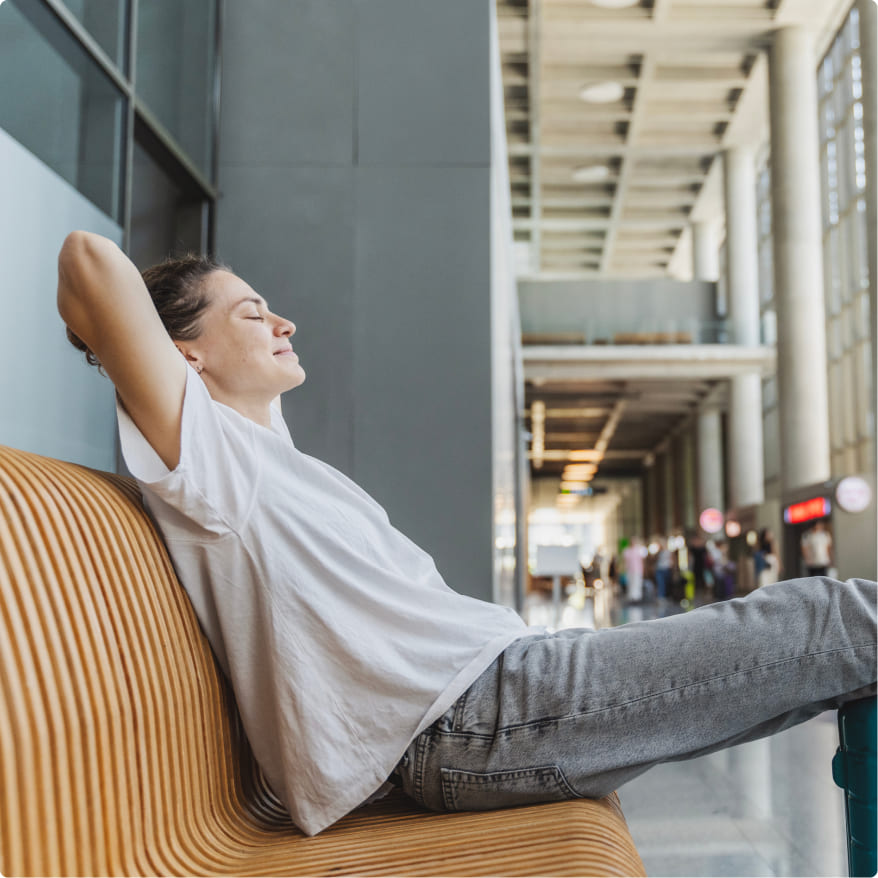
Experiment with techniques to manage pre-flight anxiety
Whether it occurs when sitting at the gate or in your seat on the plane, this stage of the travelling process can often invoke the most intense feelings of anxiety in nervous flyers. Equipping yourself with some tried and tested techniques to manage these emotions can help you have a smoother, more relaxing journey.
To start with, it’s important to give yourself plenty of time to settle in at the gate and find a comfortable seat. Then, you might try meditative breathing techniques to help relax your mind and body and better manage the natural ‘fight or flight’ response that we often feel during moments of panic.
Another approach to try is progressive muscle relaxation. This works by tensing up different groups of muscles at a time while taking a deep breath, before exhaling and gradually releasing the tension. Often, our muscles will feel more tense when we’re anxious or worried – this technique is effective at helping our bodies to feel more relaxed.
How to fight the flight germs
The last thing you want when you’re on holiday is to be sick. However, for many of us, especially those who don’t frequent busy city centres, time in an airport and on a plane means exposure to a higher number of people than in our daily lives. As a result, the chances of getting minor ailments such as a cold are much higher. Fortunately, sophisticated air filtration and circulation systems on modern planes do help with this, containing the risk to the closest passengers to the person with a cold.
Research shows that infectious respiratory conditions such as colds and flu are unlikely to reach further than 1m, meaning that the only people at risk are the rows in front and behind the unwell traveller. However, bear in mind that if this person moves around the cabin, to go to the bathroom for example, the transmission area changes.
To keep yourself healthy and fight the flight germs, it can be a good idea to carry hand sanitiser with you, and pack a face mask just in case you end up sat next to someone that’s coughing or sneezing. There’s some evidence to suggest that opting for a window seat gives you a better chance of skipping the germs too, as you’ll be further away from people walking around the cabin, as well as not having people squeeze past you to get out of their seat.
Finally, make sure to wipe down your cases with sanitising wipes when you arrive at your destination. Numerous hands will have touched them in the transfer process, and you’re likely to open the case and then immediately touch all your clothes, increasing the risk of germs spreading.
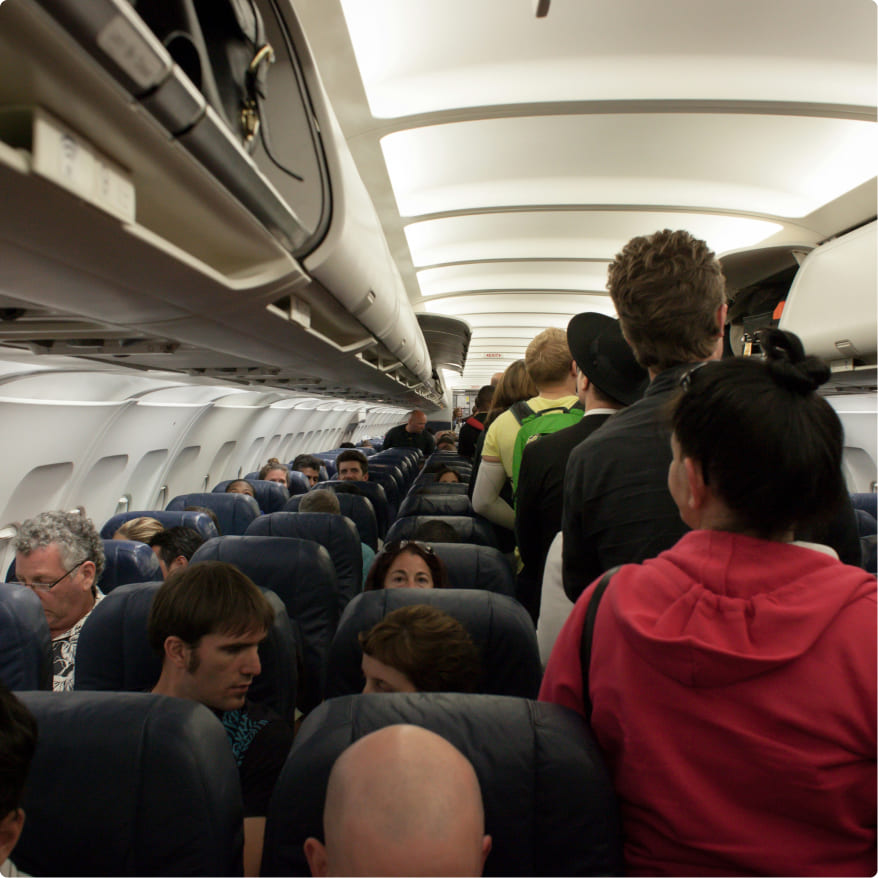
Putting your luggage away
Once you’ve boarded the flight, your first port of call will be to locate your seat and store any luggage in the overhead compartment closest to you. The overhead space is limited on planes, so it’s generally best to only put larger items or bags in the bins, especially if you’re one of the first people to board. If there isn’t enough space, flight attendants might ask you to store some smaller items by your feet. Disputes around luggage storage can ultimately cause delays, so it’s good etiquette to do your bit and store your bags responsibly.
To aid a smoother boarding process and reduce stress in the aisles, it’s a good idea to unpack anything you might need from your bag during the flight. Getting out your water bottle, tablet, headphones, book and other entertainment before putting your bag away can avoid disruptions before and during the flight.
If you’re travelling with young children, a top tip is to make use of the extra leg room and store any coats or small bags under the chair in front of them. This is also helpful in having easy access to any supplies they might need during the flight.
Flight attendants on most airlines are instructed not to help passengers lift their bags into the overhead compartments due to the risk of injury. If your bag is particularly heavy, it’s often best to politely ask another passenger for help – although you should be able to manage if your bag is compliant with the plane’s baggage restrictions. It’s also important not to move other peoples’ belongings around in the compartments to make space for your own; if you do need assistance, speak to a flight attendant.
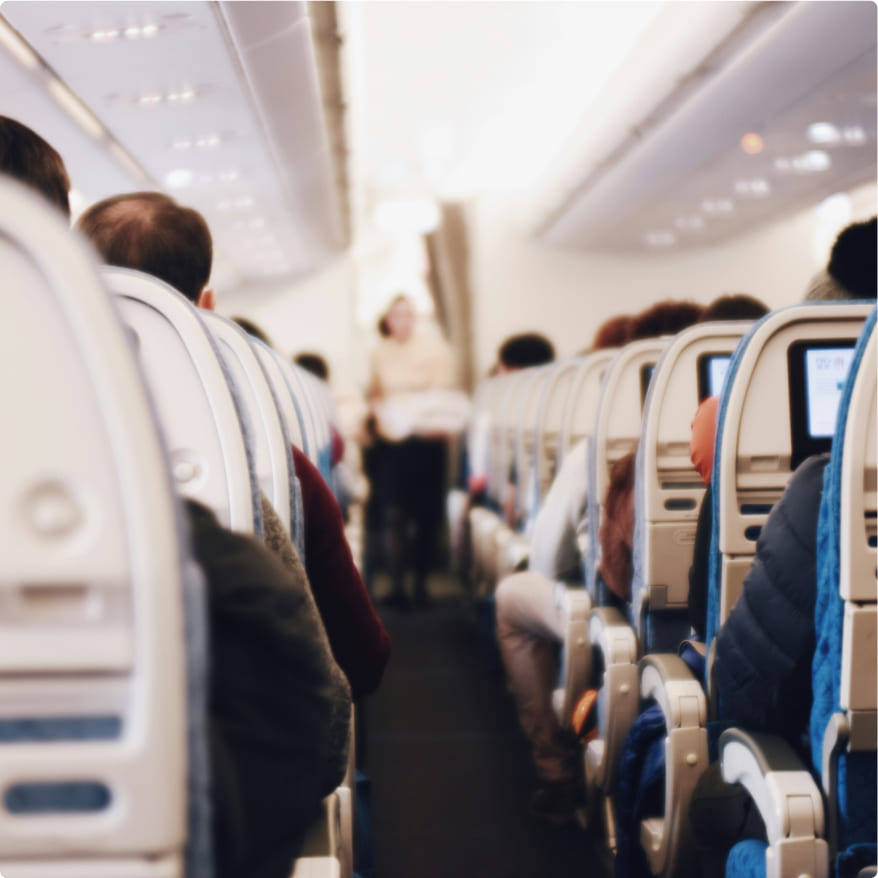
Common noises you can expect to hear
Once you’ve settled into your seat, you might start to tune into the many noises from the pre-flight checks and takeoff. For people unfamiliar with these crashes, bangs, screeches and chimes, they can be quite unsettling and add to their anxiety.
Before the plane starts moving, you may feel it shake or hear some crashing beneath you – this is most likely to be caused by the hold luggage being loaded into the cargo compartment. Once the plane starts to taxi to the runway, most of the noises will come from the engine being fired up and are completely normal; the rumbling and rattling will intensify when you reach the runway and prepare for takeoff.
If you notice any puffs of air while boarding, this is the plane’s ventilation system kicking into gear.
Once the plane is in the air, the pilot will need to retract the wheels and the wing flaps, which can create a whirring sound followed by some dull thumps. Familiarising yourself with the normal noises can help you to feel more comfortable boarding a plane and set you up for a more stress-free flight.
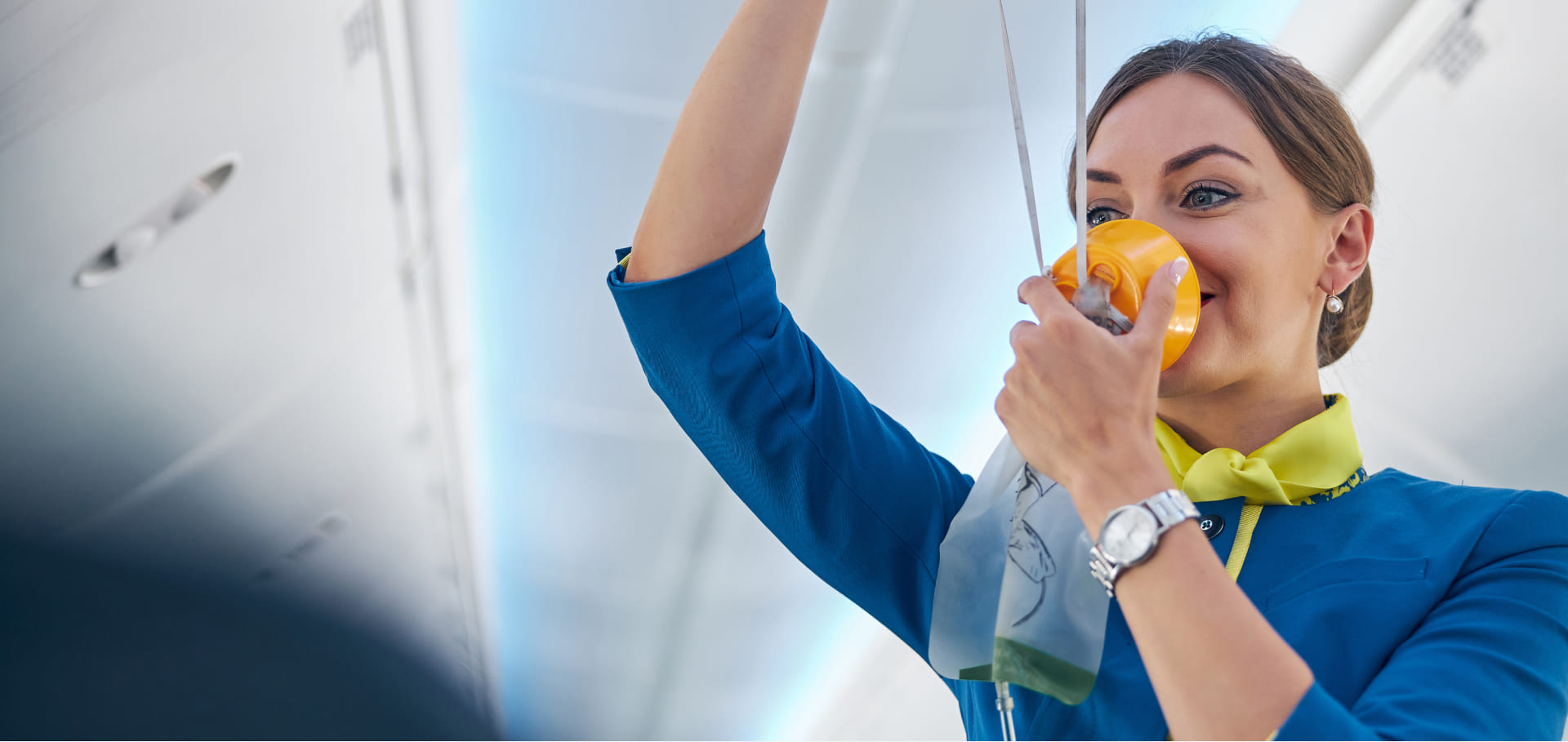
Pay attention to the safety briefing
For nervous flyers, positive visualisation can be a useful technique to help put their minds at ease. This becomes harder to do during the safety briefing, when flight attendants will provide instructions in the unlikely event that something goes wrong during the flight.
Even though it might invoke negative emotions, it’s imperative that you listen carefully to the safety briefing each time you fly. It can be reassuring to know what to do when faced with certain scenarios in the air. As tempted as you may be to settle into your chair and perhaps tune into your in-flight entertainment to distract yourself, it’s important to give it your full attention. Failing to do so could leave yourself or other passengers at risk – if you have any concerns, speak to a flight attendant.
To break the negative feedback loop, you could try to focus on more positive things. Instead of fixating on all the things that could go wrong, it might be helpful to educate and remind yourself about the safe nature of flying. Research suggests that, on average, you would need to take a flight every day for 55,000 years before a fatal crash would occur. Even in the unlikely event that the plane does malfunction and go down, survival rates are extremely high, with modern technology and more comprehensive safety training meaning your chances of surviving a plane crash are around 95%.

During your flight
The flying experience itself can be stressful for a number of reasons. Nervous fliers will naturally feel anxious, while travelling families may have unsettled children to contend with. Once you’ve settled into your seat and the wheels are up, there are lots of ways you can manage your emotions and wellbeing for a more comfortable flight.
One of the most important areas to focus on is your physical health, since our physical and mental wellbeing are closely intertwined. Especially for flights at unsociable hours, it can be a good idea to catch up on some of the sleep you’ve missed out on. Not only does it help to pass the time, but you can land more refreshed, ready to start your trip. However, drifting off while in the skies is harder for some people than others. If you’re the sort of person who struggles to sleep on a plane, there are several techniques you can try to muster some shut-eye.
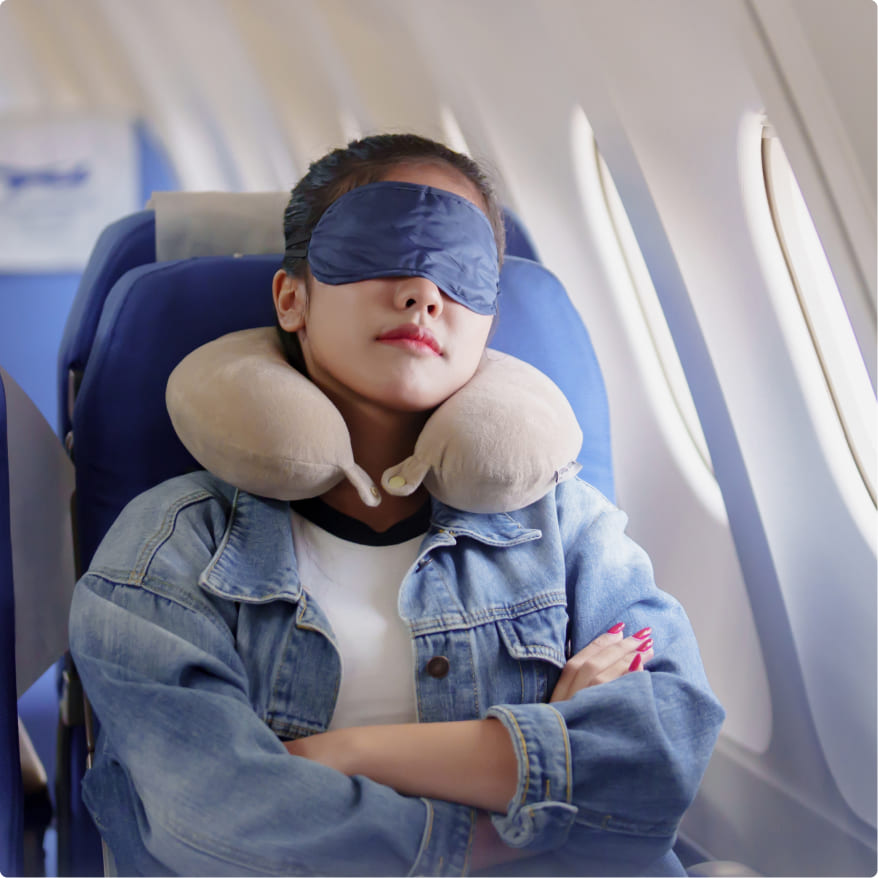
Follow normal sleep hygiene techniques
Going to the airport, it’s all too easy to suddenly ignore the concept of time. Whether it’s the temptation of an early-morning alcoholic drink or a late night coffee, we often do whatever we can just to pass the time. However, if you’re planning on getting some sleep during your flight, it’s best to stick to your normal nighttime habits as closely as possible.
Think about elements of a healthy routine that promote better sleep: avoid caffeine and alcohol, switch off your electronics and stay hydrated. If you’re doing the things that signal to your brain it’s time to switch off, you’re more likely to enjoy some slumber on the flight. While it might be the default position for many of us, some travellers recommend avoiding resting your head on the tray table since it can irritate your skin and cause numbness. Instead, lean back in your chair and use an ergonomic pillow to ease the pressure on your neck and spine.
Ultimately, though, sleep is personal. Figure out what works best for you in order to have a restful flight.
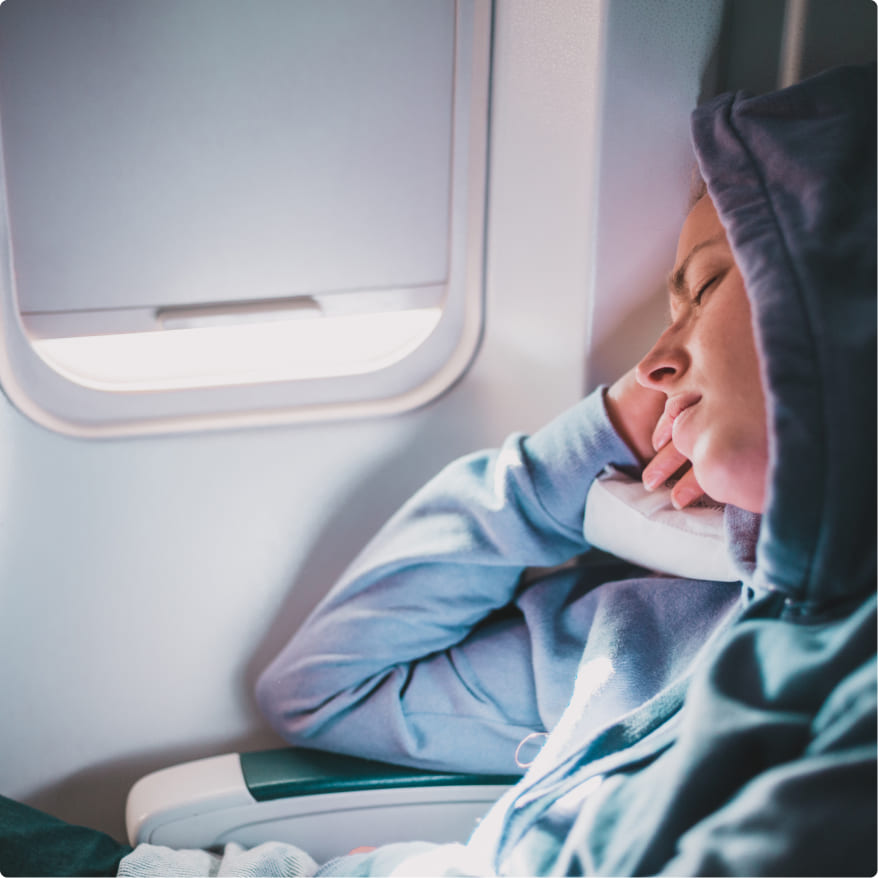
Block out the noise and light
One of the biggest obstacles to getting some sleep on a plane is the background noise. Where possible, it’s a good idea to block out the ambient noise from the plane for a more restful slumber. The noise level of a cruising Boeing 737 is around 93 decibels; considering a standard alarm clock will be around 80 decibels, it’s no wonder many people struggle to sleep through a flight.
Fortunately, there are a lot of options available to flyers. Noise-cancelling headphones or earplugs will help to block out some of the noise for a more restful flight. In addition, some studies have concluded that relaxing music could help to lower our heart rate and ease feelings of anxiety. If you’re a nervous flyer, blocking out the external noise and tuning into a peaceful playlist might help you feel more relaxed in the air.
As well as the noise, you’ll also have to contend with ambient light. Even though cabin lights might be switched off, overhead reading lights or the illumination of screens around you can still interrupt your sleep, so it’s a good idea to bring an eye mask to keep any light out.
Think about body temperature
It’s probably not the first thing on your mind when preparing for a flight, but managing your body temperature can have a big impact on both your stress levels and your ability to sleep on a plane. Often, plane cabins are intentionally kept cooler for comfort and safety reasons. Colder conditions can lessen the impact that dry air can have on our bodies, while research suggests a higher cabin temperature can also increase the risk of passengers fainting.
Bring enough layers to make it easier to regulate your body temperature. It’s also worth thinking about whether there will be a drastic change in air temperature between your origin and destination, in which case it’s worth bringing a change of clothes so you feel comfortable upon arrival. It can also be tempting to dress for the destination, rather than the journey itself. Even though it might be one extra thing to carry once you arrive, make sure you take enough layers to keep yourself warm in transit.
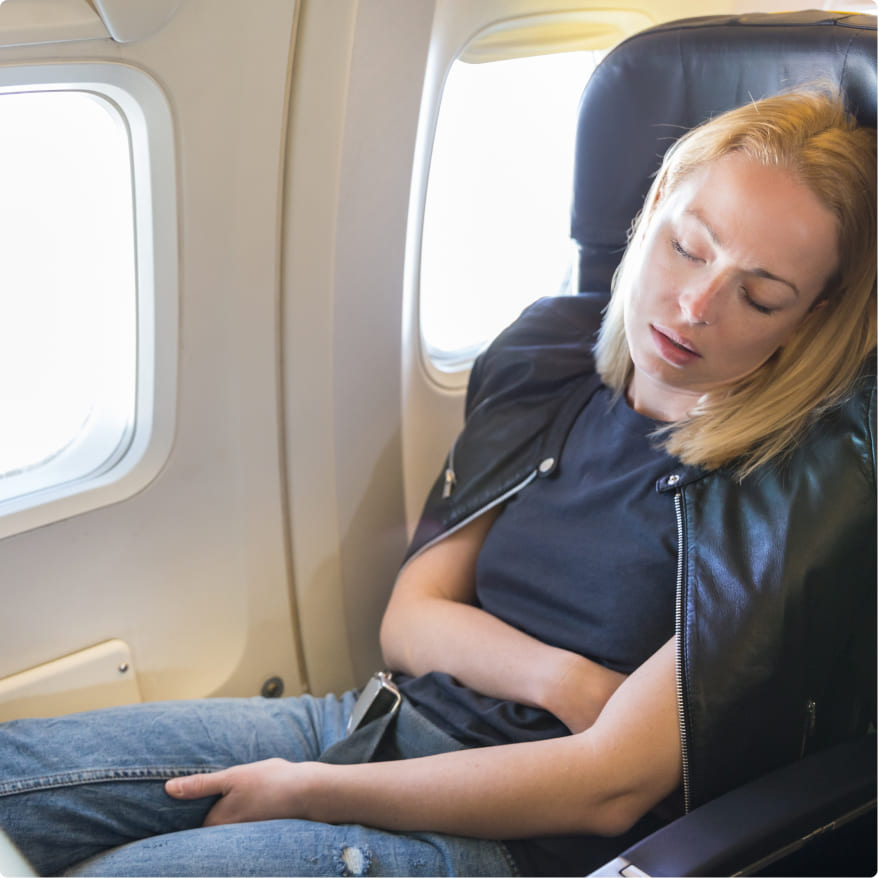
Buckle your belt over any layers
For the most restful sleep, you’ll want to minimise disruptions as much as possible. As part of their pre-takeoff and landing checks, flight attendants will need to make sure your seatbelt is securely fastened. They’re also likely to check while in the air, especially during periods of turbulence or other times that the seatbelt sign is switched on.
If you have a blanket or thick clothing on, try and remember to make your belt clearly visible so flight attendants don’t have to disturb you to ensure it’s fastened properly.
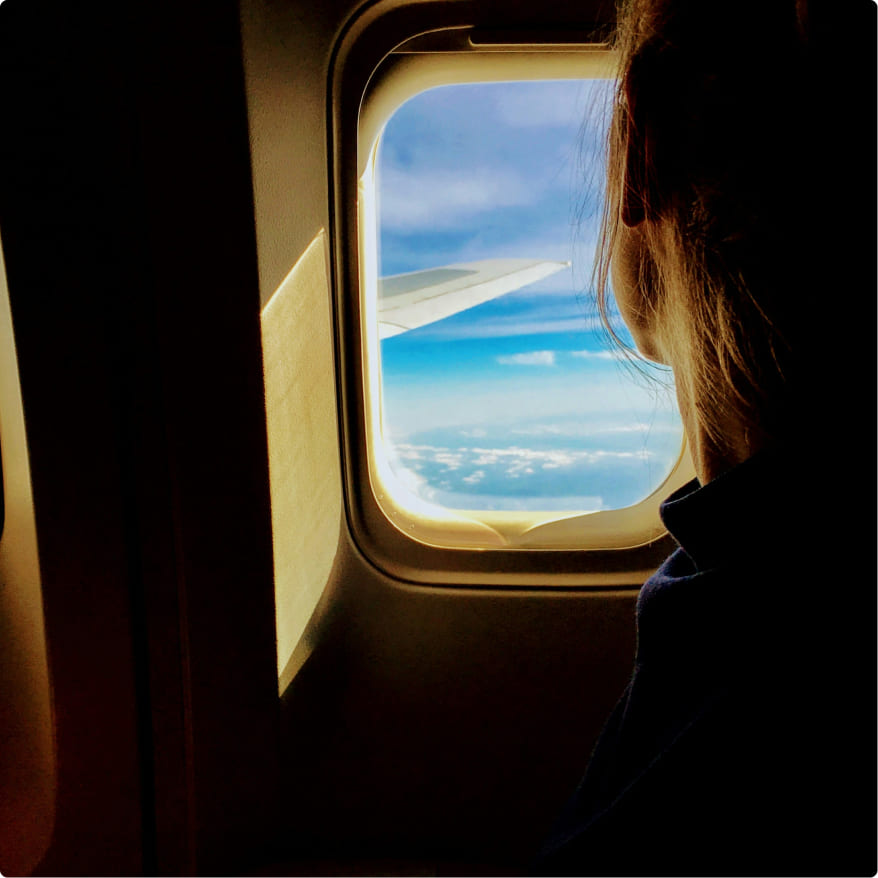
Practise mindfulness techniques
Even if it’s not a normal part of your routine, trying some mindful breathing techniques could help your brain and body to unwind and feel more settled during your flight. Everyone’s minds work differently, so an exercise that works for one person might not work for another.
There are lots of things you could experiment with: guided meditation (download the audio before your flight), deep breathing or listening to relaxing ambient noise can all help to relieve stress. Even if you don’t feel the immediate benefits, controlling your breathing is a great way to manage any stress or anxiety you might be feeling during a flight.
Remember, mindfulness isn’t just about controlling your breathing. You might prefer to do an activity mindfully, like completing a crossword puzzle, journaling or reading your book. At the very least, making a conscious effort to be more aware of your senses and surroundings can help you to relax into the journey.
As well as trying to get some sleep, there are other ways you might look to prioritise your physical wellbeing to give you peace of mind during and after the flight.
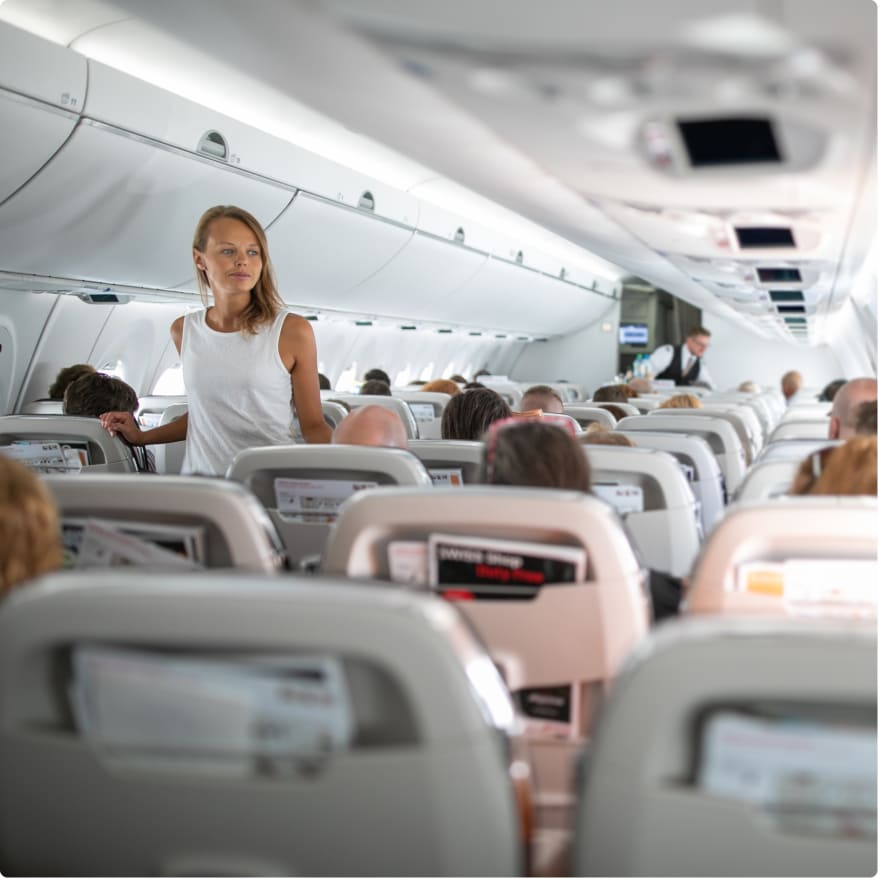
Stretching and exercising
Especially on long-haul flights, it’s important to regularly get up for a stretch in the aisles. Not only will this help from a comfort perspective, but it could actually reduce the risk of serious health issues. According to various studies, a long-haul flight makes venous thromboembolism (VTE – another term for blood clots in the veins) between 1.5 - 4 times more likely to occur, primarily due to prolonged immobility. Not all passengers will have the same level of risk. Generally, people who suffer from travel-related VTE are vulnerable to other risk factors too, such as:
- Older age (risk increases after age 40)
- Obesity
- Use of oestrogen-containing contraceptives (for example, birth control pills, rings, patches)
- Pregnancy and the postpartum period (up to three months after childbirth)
- Family history of blood clots
- Active cancer or recent cancer treatment
- Certain other long-term conditions, such as heart or lung conditions, or diabetes
Source: U.S. Centers for Disease Control and Prevention
One of the best ways to reduce your risk level is to get up for a walk at regular intervals to improve the blood flow in your legs. You should also make a conscious effort to perform gentle leg exercises in your chair: flex your ankles to engage your calf muscles, and regularly stretch out your legs. Securing an aisle seat can afford you more room to move around; if you’re in the middle or window seat, make sure to keep the space by your feet clear of luggage so you have enough room to stretch while seated.
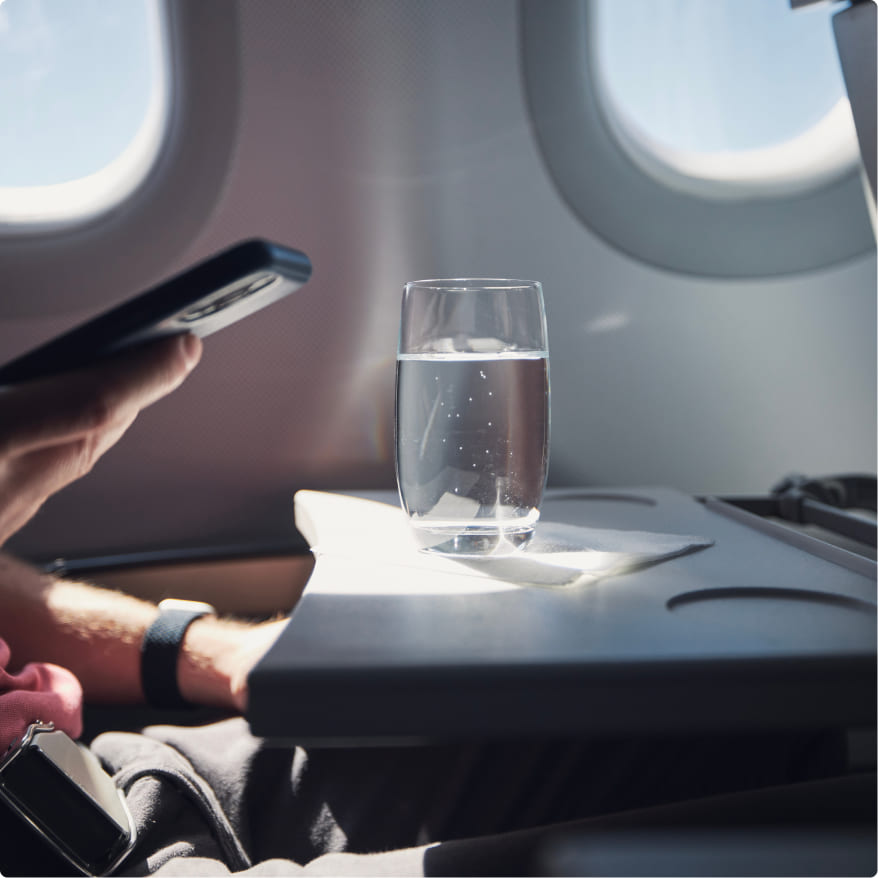
Stay hydrated
Due to the conditions of the cabin, we’re more likely to feel the effects of dehydration when on a flight. Cabins have low humidity levels and the air can be really dry: you might notice your lips, skin, nose and throat feel drier during a flight. Humidity levels on planes generally sit between 10% and 20% – this is below the ideal range for human health (30%-50%).
To combat this, it’s important to stay hydrated. Lots of people fall into the trap of limiting their water intake so as to avoid needing to go to the toilet during the flight, but this can worsen the effects of dehydration. As well as the obvious physical impacts, it can also make us feel more tired and heighten stress levels. In addition, blood can thicken when we’re dehydrated, which can further increase the risk of VTE.
It’s recommended to pack a refillable water bottle that you can ask to be topped up during the flight. For an added boost of hydration, consider packing some dissolvable electrolytes, and avoid consuming alcohol before or during the flight.
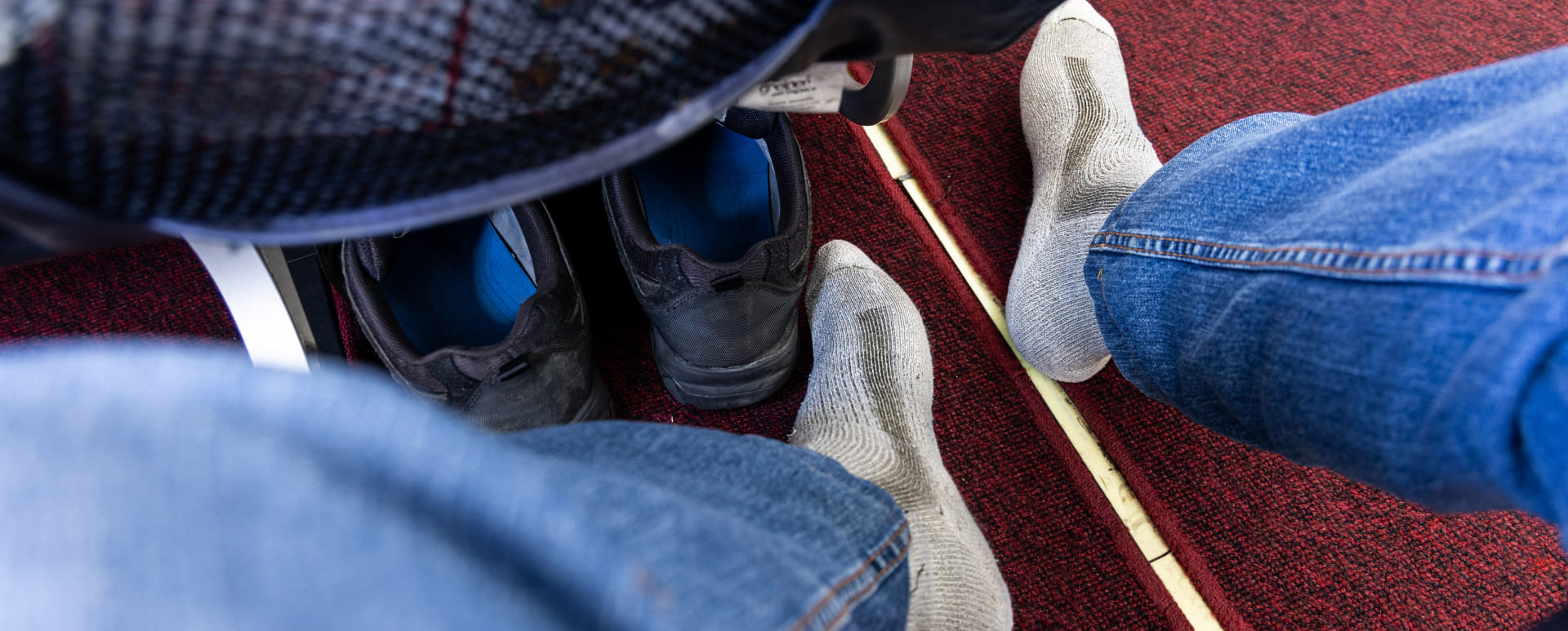
Consider compression socks
Compression socks are growing in popularity among frequent long-haul flyers and can offer several health benefits for a more comfortable journey. They’re especially beneficial to people at high risk of travel-associated VTE because they can:
- Promote better circulation in your legs
- Reduce swelling
- Stimulate calf muscles
- Reduce leg fatigue
- Provide better support and comfort



